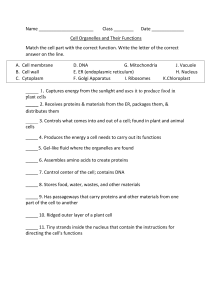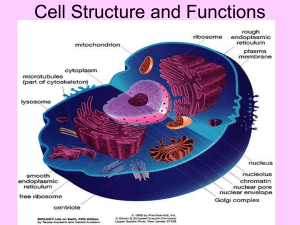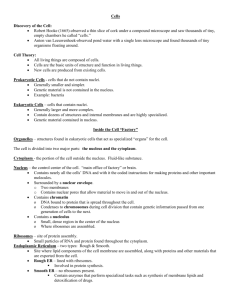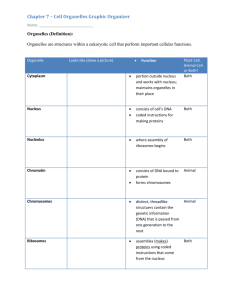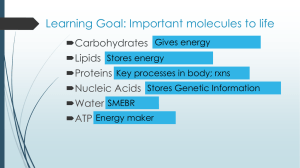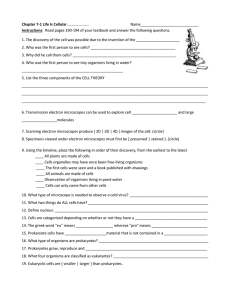Cells Part 2
advertisement
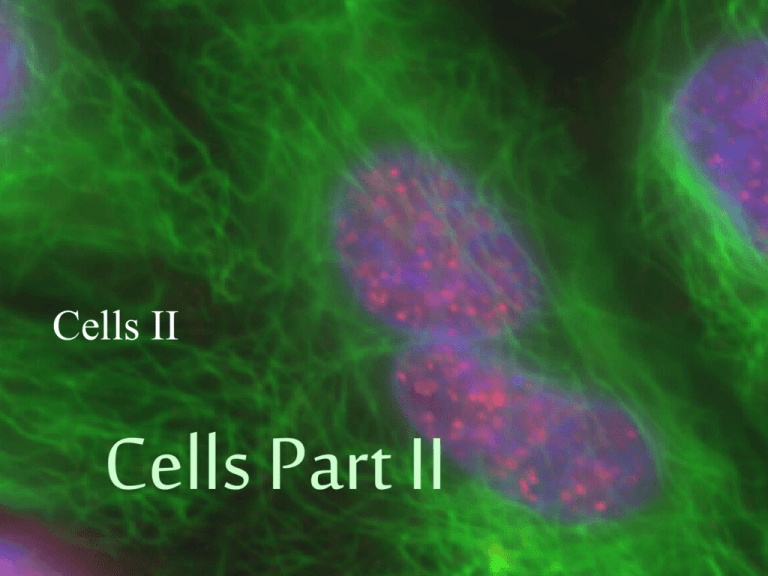
Cells II Cells Part II Cell Theory 1. The cell is the smallest unit of life. 2. All organisms are made from one or more cells. The cell carries out all life processes CellsTissuesOrgansSystemsOrganism 3. Cells arise from pre-existing cells. DNA in each cell contains all the information necessary to produce offspring All cells have: Cell membrane Surrounds, contains, protects Cytoplasm “Cell gel” fills interior of cell Ribosomes Help make proteins for cells DNA Contains instructions for cell Two Categories of Cells Prokaryotes “Before” nucleus Simple structure Bacteria Archaebacteria Eukaryotes True nucleus holds DNA Many cell parts with special functions One cell or multicellular organisms Plants! Animals! Fungi! Single-cell organisms! Eukaryotic cells are larger and more complex than prokaryotic cells Eukaryotic cells have organelles that perform special functions: Manufacture cell products Breakdown & maintenance Convert energy Movement, support Communication Think as you study cell parts: What does it look like? What is its function? What other organelles does it work with? How does the structure of this organelle allow it to do its job? Is it in Animals? Plants? Other? “Generic” Animal Cell Boundary / Protection Cell Membrane: Controls what goes in and out Cytoplasm / Cytosol: Cell Gel Cytoplasm fills cell Organelles are suspended in matrix Information Nucleus: Control Center for the Cell Contains DNA packaged into chromosomes Nucleus is connected to important endomembrane structures Manufacturing Ribosomes: Workbench for making proteins Endoplasmic Reticulum: Internal transport system of cell 2 forms of ER: Rough ER Smooth ER Ribosomes attached to ER give it a rough appearance Helps synthesize proteins Transports proteins within cell Transports Stores calcium Involved in making lipids Golgi body: Packages and Ships Cell products Protein Synthesis Making proteins is one of the most important jobs of the cell! Maintenance Lysosomes: Clean up crew; Baggies of powerful digestive enzymes get rid of old cell parts, bacteria Energy production Mitochondria: Powerhouse of the cell Extract energy from glucose to provide energy for cell functions Structure and movement Cytoskeleton 3 sizes of fibers form skeleton of cell Produce shape & create movement Plant Cells Plant Cell Plants have specialized organelles not found in animal cells: Rigid cell wall: support Chloroplasts: capture energy from sun Large vacuole: storage (water, sugars) Chloroplast: Use sunlight to make sugars Photosynthesis Chloroplasts Plant Cell Vacuole: Stores water and food Plant Cell Walls: Support and Protection A few examples of specialized cells from complex organisms
